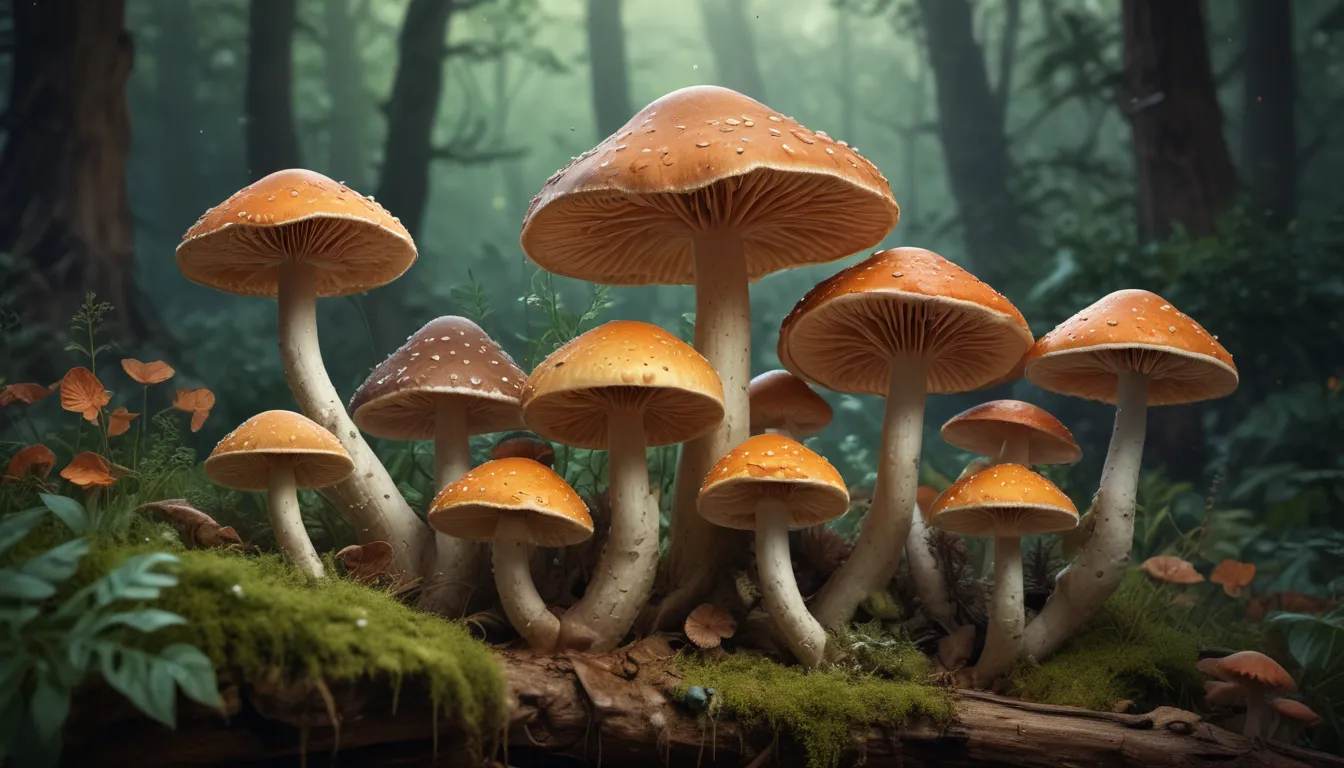The pictures we use in our articles might not show exactly what the words say. We choose these pictures to make you interested in reading more. The pictures work together with the words but don’t take their place. The words still tell you the important facts.
Fungi are a captivating group of organisms that play essential roles in ecosystems worldwide. From towering mushrooms in forests to microscopic molds in our homes, fungi are incredibly diverse and vital to our environment. In this article, we will delve into 15 fascinating facts about fungi that will deepen your appreciation and understanding of these remarkable organisms. Whether you are intrigued by their ecological significance, medicinal properties, or unique reproductive strategies, we've got you covered. So, put on your explorer hat, and let's embark on a journey into the captivating world of fungi!
Unveiling the Wonders of Fungi
- Fungi are Vital to Ecosystems: Fungi are diverse and indispensable in the environment, playing a critical role in nutrient recycling and soil health. They can form symbiotic relationships with plants and possess potential medicinal properties. Their unique characteristics, such as glowing in the dark, make them truly fascinating organisms.
Exploring the Realm of Fungi
- Fungi: The Living Organisms: Fungi belong to their kingdom called Fungi, distinct from plants, animals, and bacteria.
- Rich Diversity: With over 100,000 known species, fungi encompass mushrooms, molds, yeasts, and lichens, showcasing incredible diversity.
- Ecosystem Contributors: Fungi are ecosystem heroes, aiding in decomposing organic matter, recycling nutrients, and maintaining soil health.
The Versatile Nature of Fungi
- Medicinal Marvels: Certain fungi boast medicinal properties and have been utilized in traditional medicine for centuries. Research continues to unveil their potential in combating diseases like cancer and infections.
- Ubiquitous Presence: Fungi thrive in nearly every habitat on Earth, from the depths of oceans to the peaks of mountains, showcasing their resilience.
- Symbiotic Relationships: Fungi can form symbiotic ties with other organisms, like mycorrhizal fungi aiding plant roots in nutrient absorption.
From Plate to Petri Dish: A Culinary Exploration
- Delightful Delicacies: Some fungi are not only edible but also delicacies. Mushrooms like porcinis, morels, and truffles are highly prized for their culinary value and unique flavors.
- Reproductive Strategy: Fungi reproduce through spores, tiny cells released into the environment and carried by wind, water, or animals to new locations.
- Harbingers of Disease: While fungi have beneficial aspects, some can also cause diseases in plants, animals, and humans, impacting agriculture and health.
Fungi: Crafting Human History
- Historical Impact: Fungi have shaped human history significantly, from the discovery of antibiotics like penicillin to the production of bread, cheese, and beer.
- Networking Underground: Below the forest floor, vast networks of fungal mycelium connect trees, enabling communication and nutrient exchange between them.
- Bioluminescent Beauties: Some fungi have the unique ability to glow in the dark, creating enchanting natural displays through chemical reactions.
Fungi: Nature’s Recyclers and Builders
- Nutrient Cycling: Fungi are crucial in recycling nutrients by breaking down dead organic matter and converting it into usable forms for other organisms.
- Structural Difference: Fungi have distinct cell walls made of chitin, providing them with structural support unlike plants with cellulose cell walls.
- Environmental Protectors: Certain fungi are employed in remediating contaminated sites, adept at breaking down pollutants and toxins for environmental cleanup.
Embracing the Enigma of Fungi
In conclusion, fungi stand as captivating organisms central to the natural world. Their diversity, significance, and unique characteristics make them indispensable to ecosystems and human society alike. Whether marveling at mushrooms' colors or unraveling mycelium webs, there is always more to uncover about these incredible beings. Next time you encounter a mushroom or a patch of mold, take a moment to appreciate the intricacies and marvels of fungi.
Frequently Asked Questions About Fungi
- What are fungi?
-
Fungi include mushrooms, yeasts, molds, and mildews, constituting a distinct kingdom separate from plants and animals.
-
How do fungi obtain nutrients?
-
Fungi acquire nutrients by breaking down organic matter through enzyme secretion, converting complex compounds into simpler forms for energy.
-
Can all fungi make mushrooms?
-
Not all fungi produce mushrooms; while some fungi use mushrooms as reproductive structures, others employ different methods like spores or budding.
-
Are all fungi harmful?
-
No, while some fungi can cause diseases, others serve beneficial roles in ecosystems, such as decomposing dead matter and forming symbiotic relationships.
-
Can fungi be used for medicinal purposes?
- Certain fungi possess medicinal properties, aiding in antibiotic and antifungal drug production and other pharmaceutical applications.
Providing Trustworthy Information
Our commitment to delivering engaging and credible content drives our dedication to ensuring the highest standards of accuracy and reliability. Each contribution from real users like you enriches our platform with diverse insights and information. Trust in our commitment to quality and authenticity as we explore and learn together, discovering the wonders of fungi and the natural world.






